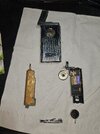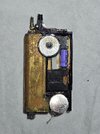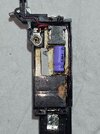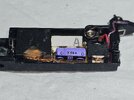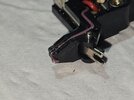I have an old 1980s electronic lighter which uses an LR44 battery to create a spark that jumps across the gas nozzle as butane gas is flowing.
You are meant to create the spark by just touching the central screw that is connected to the circuit (under the Ronson logo)
I have installed a new battery but it does not create a spark. Wires and connections all seem to be in decent order.
There was some corrosion on the bottom battery contact that I have since cleaned up with vinegar and IPA.
Any help appreciated for how to get this working.
You are meant to create the spark by just touching the central screw that is connected to the circuit (under the Ronson logo)
I have installed a new battery but it does not create a spark. Wires and connections all seem to be in decent order.
There was some corrosion on the bottom battery contact that I have since cleaned up with vinegar and IPA.
Any help appreciated for how to get this working.
